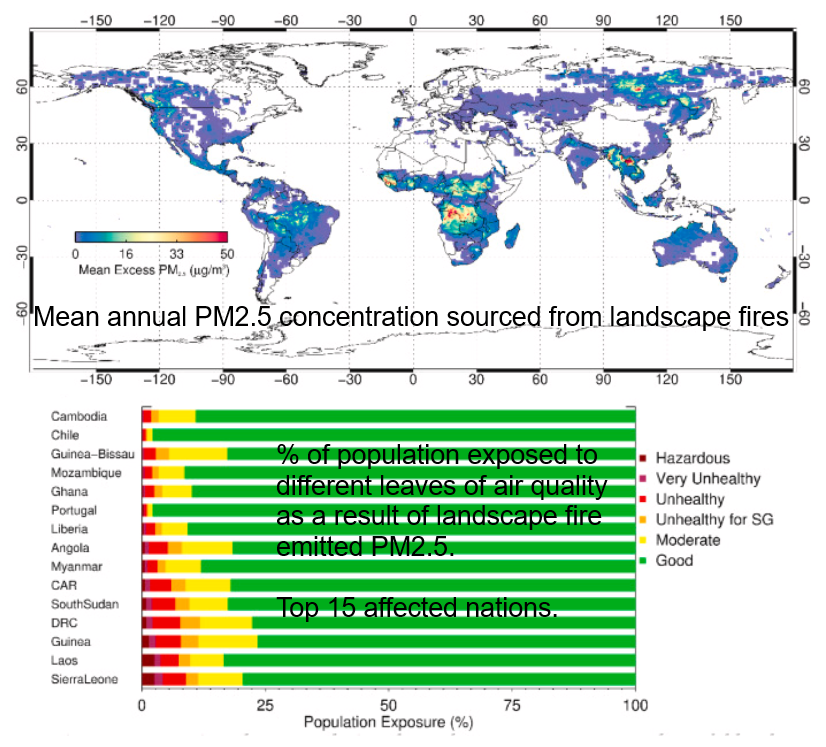Xu, W., Wooster, M.J., He., J. and Zhang, T. Remote Sensing of Environment
➢ New SLSTR active fire detection and fire radiative power (FRP) retrieval algorithm for Sentinel-3 satellite
➢ Basis for operational SLSTR FRP products from EUMETSAT and ESA, available e.g. through Sentinel Data Hub.
➢ Cluster based approach implemented to cope with SLSTR spatial mis-registation between certain channels.
➢ Strong FRP agreement is found between SLSTR and MODIS views of fire clusters on a per-fire basis.
➢ SLSTR offers a capability to detect smaller (lower FRP) fires than MODIS.


Roberts, G. and Wooster, M.J., Atmospheric Environment
➢ 143 countries have an average population weighted (PW) PM2.5 exceeding the WHO recommended annual 10 μg m−3 guideline.
➢ Globally, 44 million people exposed to ‘unhealthy’ air quality on an annual basis.
➢ Landscape fire emitted PM2.5 results in 677,745 premature deaths annually.
➢ Children under 5 years comprise 39% of this total.
Liu, Y., Wooster, M.J., Grosvenor, M.J., Lim, K.S., Francis, R.A. Ecological Enyomology
➢ A strongly negative and highly significant
linear correlation between flight speed and
PM2.5 concentration was also observed.
➢ the longer the butterflies were exposed to
the elevated PM2.5 concentrations the more
obviously their flight behaviour declined.


Fisher, D., Wooster, M.J., Xu, W., Thomas, G., Lestari, P. Sensors
➢ A TPM Ce estimate of 16.8 ± 1.6 g·MJ−1.
➢ A single one of these most radiant
fires is responsible for almost 10% of the overall particulate matter released during the 2015 fire event, highlighting the importance of this fire type to overall emission totals.
![]()
King’s College London, Bush House (NE wing), 30 Aldwych, London, WC2B 4BG